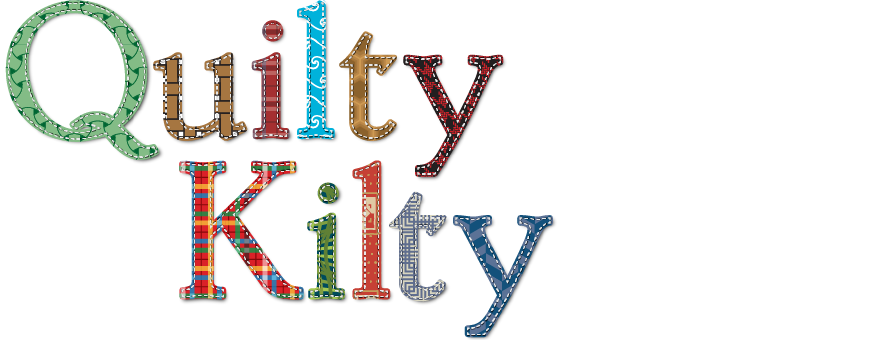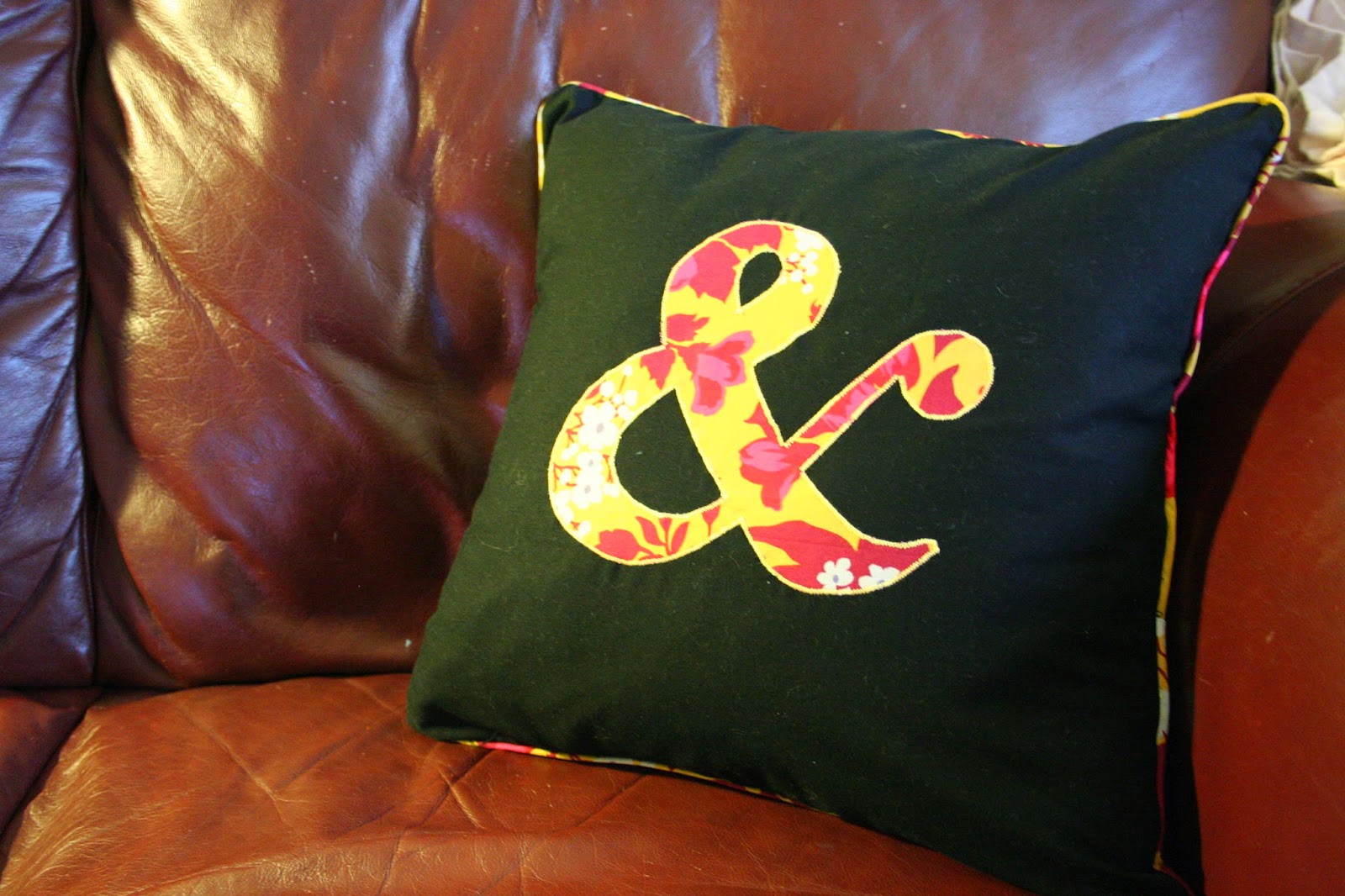I really enjoy group sewing projects, you get to have all sorts of excuses to meet up on a school night and have a cheeky glass of wine, and get to obsess with pals over colours and plans for your quilt. I've done a few projects with Rachel, like our When the Rains Come quilt. (I should retro-blog about some other things we've sewed together.) This time I was working with Kim.
Our friend Erin was turning 40, and Kim and I wanted to come up with something creative and personal. So we thought of Erin at every step of the quilt we planned to make for her.
After a few false starts (looking back through emails with Kim - my how the plans changed!) we settled on a simple but effective pattern. Squares with sashing, with white sashing for every other square. I've made a quilt like this before- it lives in my lounge room (usually under the cat).
A previous creation in greens and blues
I fell a bit in love with Moda's Chantilly design when I was searching for the fabric to use. It's bright, summery, a bit antiquey, a bit girly but not in a sickly sweet way. We bought 2 charm packs to make Erin's quilt. The pre-cut squares are 5 inches square. We went to Mandors to get co-ordinating fabric for the sashing. We congratulated ourselves with coffee and cake for doing such a good job of figuring out how much fabric we needed for all the sashing, and the complimentary colours we chose.
The plan was to sew one charm pack each- I'd sew 40 patches and Kim would sew 40. Settling on 2.5 inch sashing- it was all too easy. Cut, chain sew (lazy slacker I am), press, get together for wine and laying out the quilt top. This was going to be easy peasy.
 |
| Chain sewing sashing to squares to save time |
Right... so... turns out everyone measures and rotary-cuts fabric ever so slightly differently. And then everyone has a slightly different take on how to sew a 1/4 inch seam allowance. When you multiply that factor by 80 patches, it's quite a noticable difference! Oops. Still, it's all part of the fun, wine was consumed, a solution found (i.e. I sewed some rows together and then ran away to leave Kim to do the rest) and a gorgeous quilt was made.
Kim quilted it together, and I finished it up with the binding and label.
We gave it to Erin at our camping weekend. We hope she gets as much joy out of it that we had making it.
 |
| ta daaa! Kim and me and Erin's quilt, I am the fool on the right. |































